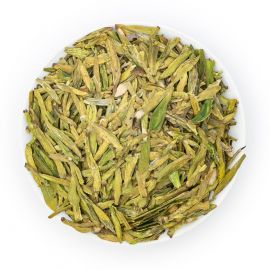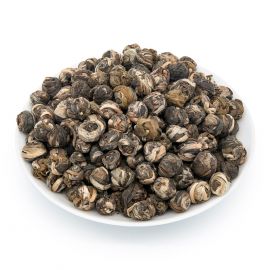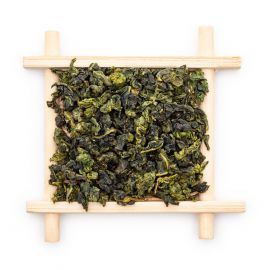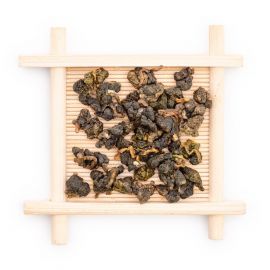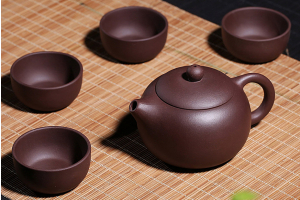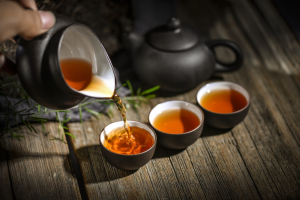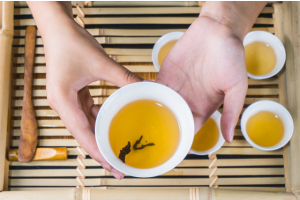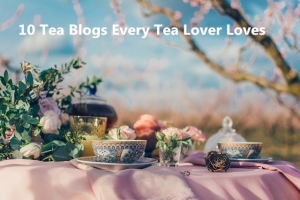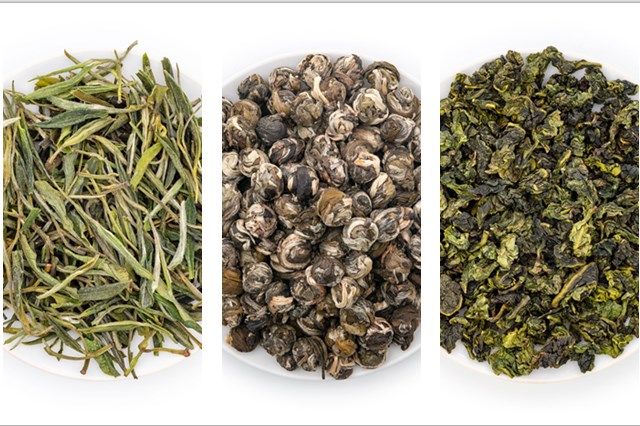
What kind of tea does the tea in the picture belong to? green tea? Oolong tea? After reading this article, come and guess.
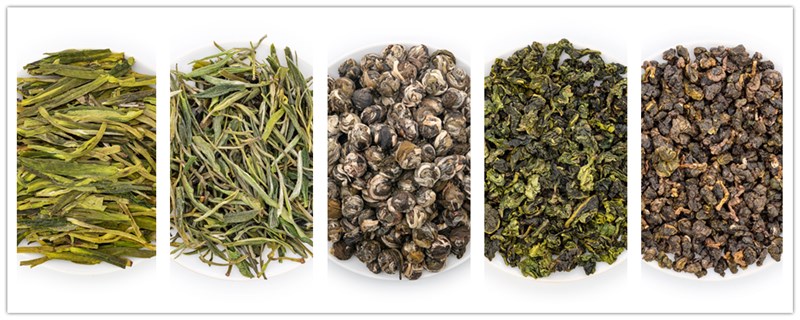
Oolong tea, also known as semi-fermented tea and fully fermented tea, has many varieties. It is a tea category with distinctive Chinese characteristics among several major teas in China.Green tea is a kind of tea that has not been fermented. It is also a famous tea in China's history.
Oolong tea is not green tea.
Different degrees of fermentation
- Oolong tea
Oolong tea is a tea of excellent quality that is produced after picking, withering, shaking, frying, rolling, baking and other processes. It evolved from the tribute tea dragon group and phoenix cake in the Song Dynasty, and was created around 1725 (in the Yongzheng period of the Qing Dynasty). After tasting, the cheeks remain fragrant and the aftertaste is sweet and fresh. The pharmacological effects of oolong tea are prominently manifested in the decomposition of fat, weight loss and bodybuilding. It is called "beauty tea" and "fitness tea" in Japan.
- Green tea
Green tea is unfermented tea, which refers to the use of new leaves or buds of the tea tree, without fermentation, and the process of finalizing, shaping, and drying to make tea. The color and luster of the finished product and the tea soup after brewing preserves the green style of fresh tea leaves, and contains tea polyphenols, catechins, chlorophyll, caffeine, amino acids, vitamins and other nutrients.
Different processing techniques
1, green tea
(1) Fixation
Fixation plays a decisive role in the quality of green tea.Through high temperature, the characteristics of enzymes in fresh leaves were destroyed, and the oxidation of polyphenols was prevented to prevent the leaves from turning red.At the same time evaporates part of the moisture in the leaves, making the leaves soft, for rolling shape to create conditions.With the evaporation of water, the low-boiling aromatic substances with grass gas in fresh leaves evaporate and disappear, thus improving the aroma of tea leaves.
(2) Rolling
Rolling is a process used to shape green tea.Through the use of external force, the blade is made to knead and break light, roll into strips, the volume is reduced, and easy to brew.At the same time, some tea juice extrude and adhere to the leaf surface, which also plays an important role in improving the tea taste concentration.Green tea rolling process has a cold and hot kneading.
(3) Drying
Dry for the purpose of evaporating water and finishing the shape to give full play to the aroma of tea.Drying method, there are drying, drying and drying three forms.Green tea drying process, generally after drying, and then Fried dry.Because of rolling tea, water content is still very high, if directly Fried dry, it will soon form into a lump in the frying machine pot, tea juice easy to bond pot wall.Therefore, the tea is dried first to reduce the water content to meet the requirements of wok frying.
2.Oolong tea
(1) Withering
There are two kinds of sunlight withering and indoor withering.Sunlight withering, also known as sun green, allows fresh leaves to send out part of the water, and makes the material in the leaves moderately transform to reach the appropriate fermentation degree;Indoor withering is also known as "cool green", allowing fresh leaves to wither naturally indoors is also a common method of withering oolong tea.
(2) Shaking
It is the key to making oolong tea.After the withering tea leaves have been shaken for 4-5 times, a series of biochemical changes have taken place in the fresh leaves, forming the unique characteristic of "green leaves red edge" on the bottom of oolong tea and the unique aroma of oolong tea.
(3) Stir Fixation
The stir fixation destroys the tea enzyme in tea, prevents the leaves from turning red, and makes the green taste of tea fade away and the tea aroma emerge.
(4) Rolling
It is a modeling step, that is, tea leaves are made into balls or cords to form the shape and structure of oolong tea.
(5) Baking
It is dried to get rid of excess water and bitterness, and baked until the tea stem is broken and crisp, with pure smell, making tea fragrant and high alcohol.
Different quality characteristics
Oolong tea is fat, strong and even, with a sandy green color, a strong aroma, a light floral and fruity fragrance, and a mellow and sweet taste.
Green tea has not been fermented, and the color and tea soup of the finished product preserve the green color of fresh tea leaves, and the distinctive feature is the clear soup and green leaves.
Different origin
Oolong tea is a kind of tea unique to China. It is mainly produced in the three provinces of Fujian, northern and southern Fujian, Guangdong and Taiwan. Sichuan, Hunan and other provinces also have a small amount of production.
The range of green tea is extremely wide. Henan, Guizhou, Jiangxi, Anhui, Zhejiang, Jiangsu, Sichuan, Shaanxi (South Shaanxi), Hunan, Hubei, Guangxi, and Fujian are the main green tea producing provinces in my country.
Effect of different
Oolong tea, after fermentation, contains higher tannic acid composition, compared with green tea, more conducive to digestion, fat elimination, weight loss, detoxification and so on.
Green tea is not fermented tea, tea polyphenols content is high, strong convergence, has a significant refreshing, digestion, decrease internal heat, heat relief and other effects.
In short, Oolong tea is not green tea. Although the Tie Guan Yin Clean Aroma is emerald green, its production process is still oolong tea.
There are many differences between the two, but both are famous historical teas in China and each has its own advantages!
Now you know what kind of tea the tea in the picture belongs to? If you are not sure, welcome to discuss or email to me.

